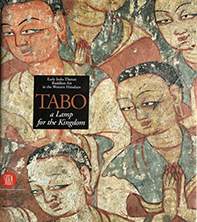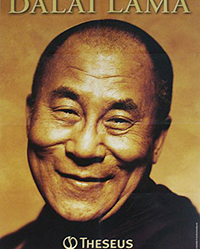Beschreibung
Early Indo-Tibetan Buddhist Art in the Western Himalaya
In order to understand the history and culture of Tabo and the kingdom of Purang-Guge the book concentrates on the most important monument to survive, the Main Temple at Tabo, built in 996 and renovated in 1042. The temple is remarkable not only fot the extraordinary quality of the Buddhist painting and sculpture, which covers every surface of the entire temple, but also for the numerous paintings depicting contemporary society. The royal patrons and their families, the local nobility, and the monastic community are identified by name and often place of origin and with careful attention to their costumes. The art-historical studies are based on the painstaking documentation of the art and inscriptions during six expeditions to Tabo over many years.
Deborah Klimburg-Salter, who has published numerous scientific articles on the art of the period, describes the art, iconography, and contemporary rituals. This is the first time that the complete iconographic programme of an Indian Buddhist monument is explained within the context of contemporaneous beliefs and customs. In the course of a detailed description of the Main Temple, the reader is introduced to the beliefs, religion and history of this Indo-Tibetan society in the X and XI centuries.
The discussion of the Main Temple is accompanied by about 260 photographs, plans, and diagrams including comparisons to other related monuments in India and Tibet. The 150 colour photographs are largely the work of Jaroslav Poncar, well known for his photobooks and films on Asian art and society. Despite the fact that Tabo is one of the masterpieces of Indian art, it has never been thoroughly published in colour. Luciano Petech, the acknowledged authority on the history of Tibet, contributes an extensive chapter on the history of the dynasty of the kings of Purang-Guge and their successors from the X to the XVII centuries. This will certainly be the authoritative work in this field for many years. Shorter contributions offer new perspectives on specialized issues: the iconography, technique, and craftsmanship of the lifesize clay sculptures, and the exquisite textile patterns, including the painted textiles on the ceilings, are traced to their origin in Northern India.
The book presents the results of an interdisciplinary research project conducted at the Istitute of Tibetan and Buddhist Studies at the University of Vienna in cooperation with the Italian Istitute for Africa and the Orient (formerly IsMEO). It was only thanks to the expertise of scholars from diverse disciplines that it has been possible to reveal the story of this ancient monastery.
Antiquarisches Exemplar, gebraucht, Buch innen sehr gut, Leineneinband und Schutzumschlag haben leichte Gebrauchsspuren.
280 Seiten, gebunden mit Schutzumschlag, Englisch, 260 Abbildungen (150 in Farbe), Skira Editore, Milan 1997, Thames and Hudson Ltd. London, Format 25 x 29 cm





Bewertungen
Es gibt noch keine Bewertungen.